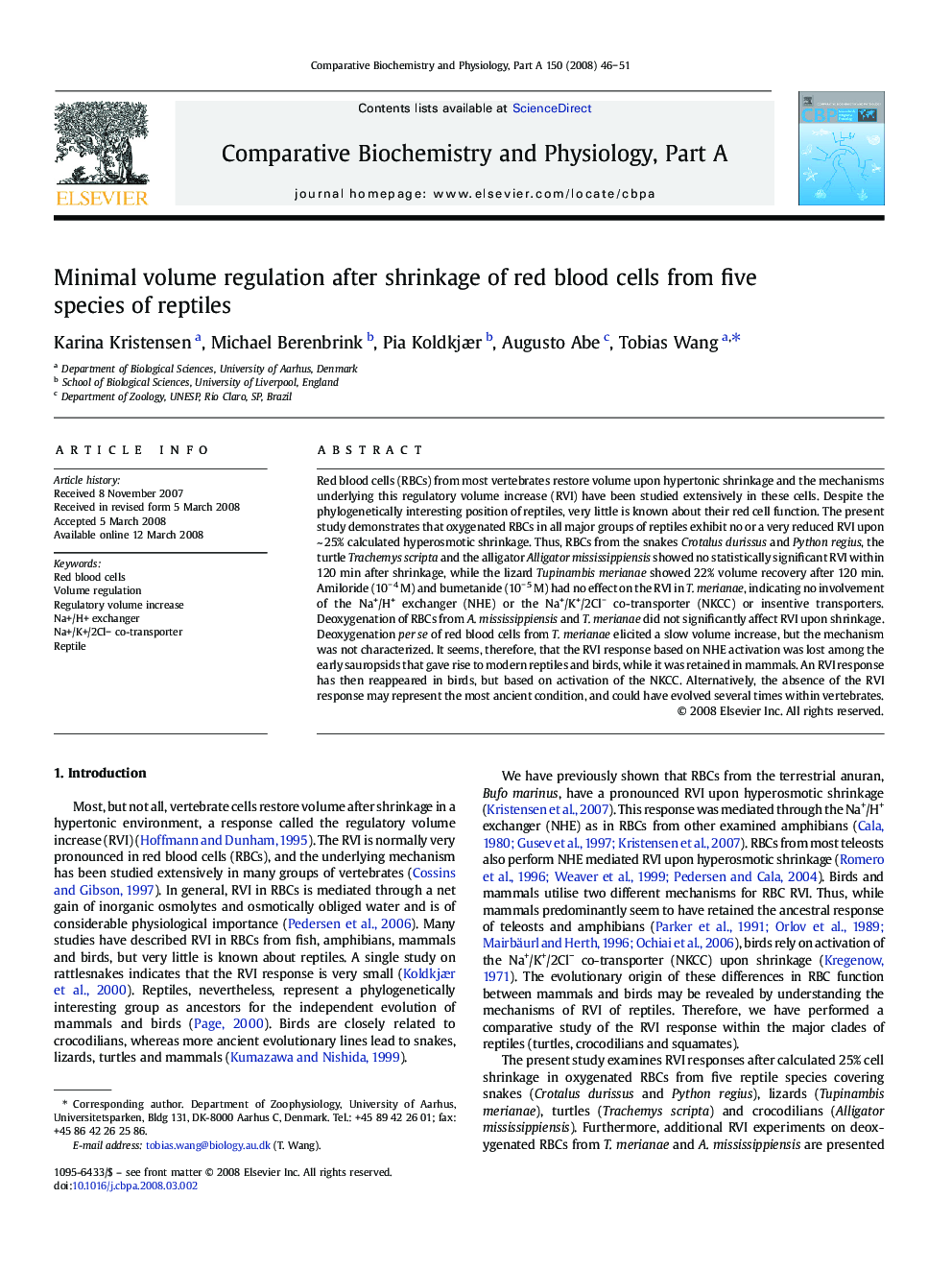| Article ID | Journal | Published Year | Pages | File Type |
|---|---|---|---|---|
| 1974729 | Comparative Biochemistry and Physiology Part A: Molecular & Integrative Physiology | 2008 | 6 Pages |
Abstract
Red blood cells (RBCs) from most vertebrates restore volume upon hypertonic shrinkage and the mechanisms underlying this regulatory volume increase (RVI) have been studied extensively in these cells. Despite the phylogenetically interesting position of reptiles, very little is known about their red cell function. The present study demonstrates that oxygenated RBCs in all major groups of reptiles exhibit no or a very reduced RVI upon ~ 25% calculated hyperosmotic shrinkage. Thus, RBCs from the snakes Crotalus durissus and Python regius, the turtle Trachemys scripta and the alligator Alligator mississippiensis showed no statistically significant RVI within 120 min after shrinkage, while the lizard Tupinambis merianae showed 22% volume recovery after 120 min. Amiloride (10â 4 M) and bumetanide (10â 5 M) had no effect on the RVI in T. merianae, indicating no involvement of the Na+/H+ exchanger (NHE) or the Na+/K+/2Clâ co-transporter (NKCC) or insentive transporters. Deoxygenation of RBCs from A. mississippiensis and T. merianae did not significantly affect RVI upon shrinkage. Deoxygenation per se of red blood cells from T. merianae elicited a slow volume increase, but the mechanism was not characterized. It seems, therefore, that the RVI response based on NHE activation was lost among the early sauropsids that gave rise to modern reptiles and birds, while it was retained in mammals. An RVI response has then reappeared in birds, but based on activation of the NKCC. Alternatively, the absence of the RVI response may represent the most ancient condition, and could have evolved several times within vertebrates.
Related Topics
Life Sciences
Biochemistry, Genetics and Molecular Biology
Biochemistry
Authors
Karina Kristensen, Michael Berenbrink, Pia Koldkjær, Augusto Abe, Tobias Wang,
